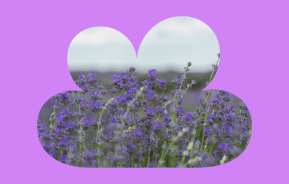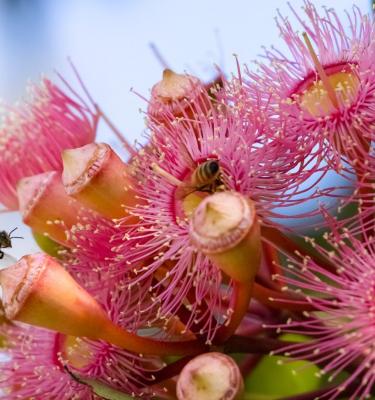
10 Aussie Native Plants That’ll Attract Bees To Your Garden
You can attract bees to your garden by choosing plants that produce lots of nectar, pollen and shelter at different times of the year. In this article, we will explore the very best Aussie native plants for bees to include in a pollinator-friendly garden.
The Best Aussie Native Plants For Bringing Bees To Your Garden
The following 10 plants are some of the best plants for bees in Australia. Simply choose which ones will work best in your garden at home and do your bit to help the environment and create a more pollinator-friendly space.
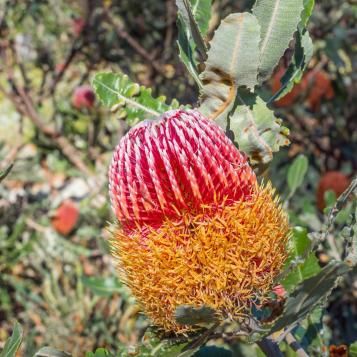
1. Banksia
Hardy and very tolerant of drought, these Australian wildflowers come in a range of colours and sizes. What they have in common is a colourful cone-like flower spike and their appeal to a wide range of pollinators.
Native bees, birds, bats and possums all feed on the nectar of Banksia, pollinating other plants as they do so. Plant out Banksia all year round, growing them in the ground or in containers filled with Scotts Osmocote Native Potting Mix. Place in full sun and water regularly until established.

2. Grevillea
Also known as spider flowers, Grevilleas are an evergreen shrub or small tree, with several hundred species native to Australia. They attract a variety of pollinators, including butterflies, moths and birds.
Take soft tip cuttings from December onwards and allow them to grow on before planting outside. Grevillea vary in their temperature requirements, with some varieties able to tolerate very cold weather, whereas others cannot, so check the particular species before deciding where to put it.
Sprinkle Scotts Osmocote Controlled Release Fertiliser for Natives around the soil to give your Grevillea a bit of TLC and make sure they're in a spot with plenty of sunshine and good drainage.
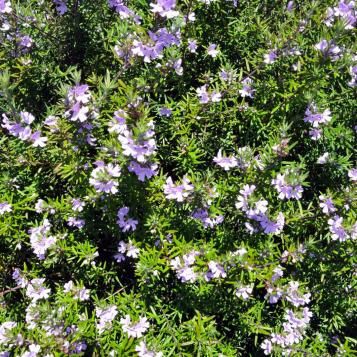
3. Native Rosemary (Westringia fruiticosa)
Native to the eastern shores of Australia, the coastal rosemary is a small shrub with delicate white to light blue flowers. It will tolerate a wide range of soil types, making it a very versatile plant to add to the garden.
Flowers appear most of the year, giving it big appeal to pollinators, especially blue-banded bees which are strongly drawn to it. Take cuttings from tender new growth in the spring, pot up and plant out before the winter arrives.

4. Bottlebrush
Bottlebrushes are widely found across the country, with their distinctive brush-like flowers particularly attractive to native bees and birds. They generally need full sun and moist conditions, although some species will tolerate drier conditions.
Take semi-ripe cuttings or sow seeds, and pot on until large enough to plant outside. The thick growth of bottlebrush plants means they are great for providing privacy, so perfect for a garden perimeter.
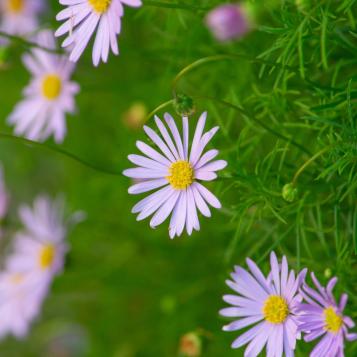
5. Cut-leaf daisy (Brachyscome multifida)
The flowers of this delicate perennial are an attractive light pink, pale purple, or white, with a yellow centre. The flat arrangement of the flowerheads makes it easy for bees and other beneficial insects to retrieve nectar from them.
Cut-leaf daisies tolerate a wide range of soil types, including very dry conditions, and prefer full sun. Stems of this plant will sucker without much help, and you are likely to find that plants will spread themselves across the soil – simply dig up a clump and move it to the desired location.
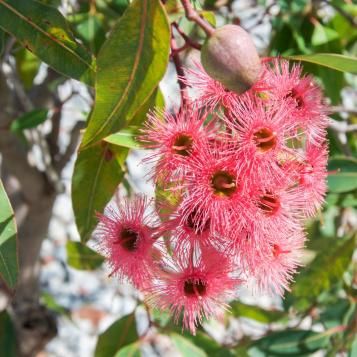
6. Eucalyptus
This large, attractive evergreen tree is a pollinator powerhouse, with the flowers providing prolific amounts of nectar. Birds, bats, bees and possums will make the most of this tree, as will koalas who enjoy eating the leaves.
Eucalyptus trees like full sun and warmth, and well-drained soil. They can be grown in containers to keep at a manageable size, or in the ground, where they will grow to match the space available. Locate in a place where they will not get in the way of other garden features and structures, and prune as needed to keep them under control.
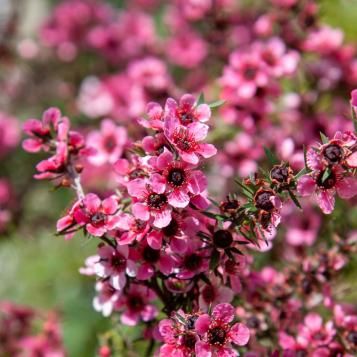
7. Tea Tree (Leptospermum scoparium)
Also known as Mānuka, this plant is famed for the nectar that it produces and which is gathered by honeybees to make Mānuka honey. This small tree has pretty white or pink flowers which appear in the summer, and narrow, prickly evergreen leaves. Plant out in the winter in a location where prolonged cold weather and water-logging aren't a problem. The Tea tree is tolerant of a wide range of soils but needs hot and dry conditions.
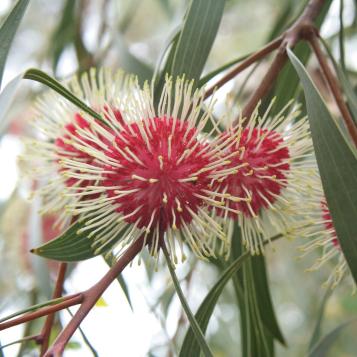
8. Pincushion Hakea
The alien-like red and white flowers of this small tree are a magnet for bees. With a long flowering period from spring to autumn, this is a striking plant that is tolerant of a wide range of conditions. It will enjoy sand or clay soil as long as it is well-drained, and likes full sun. Prune to maintain shape and to keep at a reasonable size - it will grow to 6m (20’) tall if allowed.
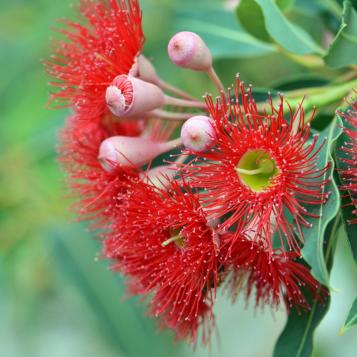
9. Red Flowering Gum (Corymbia ficifolia)
This native tree is related to the Eucalyptus and has similarly fragrant leaves with orange, pink or red flowers that appear in the spring. These have particular appeal for native bees.
Grow from seeds, which are readily available from fruits that have fallen from the tree to the ground. Once seedlings have germinated and are at a size that can be easily handled, move to a final location, enriching the soil with Scotts Osmocote Plus Organics All Purpose Plant Food & Soil Improver to help young plants to grow strongly.
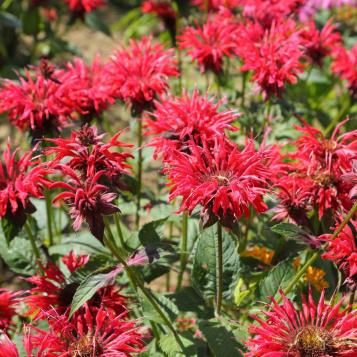
10. Monarda
Also known as bee balm, bergamot and Oswego tea, this is a perennial with pleasantly aromatic leaves and white, pink, purple or red flowers. These flowers attract a wide range of pollinators, as well as other beneficial insects which will feast on unwanted pests in the garden.
Monarda needs lots of sun and well-drained soil, as well as lots of moisture too, so make sure to water them in dry spells to avoid powdery mildew. Feed with Scotts Osmocote All Purpose Pour+Feed to maintain good nutrient levels and promote prolific flowering.







